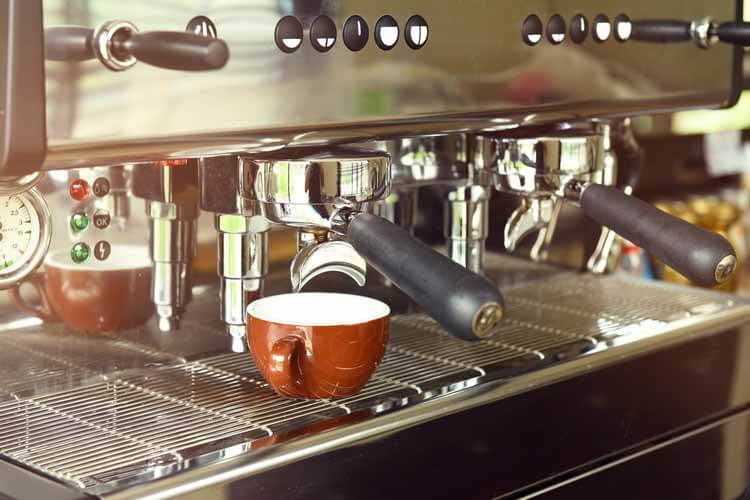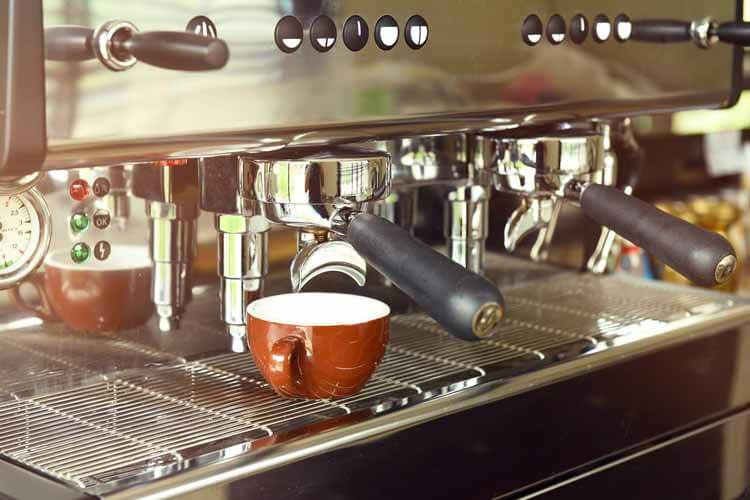We use espresso machines on a daily. But have you ever wondered how does this machine work?
We often wonder how different appliances that we use work the way they are working. So if recently your curious mind has come across the question that how does an espresso machine work, then don’t worry, we have got you covered.
Knowing how this machine works will help you understand the process a lot better. It will also help you out if something goes wrong it as you’ll know about the components much better now. We’ve described, in great detail, exactly how the machine works, just for you.
The Work Process
In this section, we will try to explain the whole process of how an espresso machine works in a very simple way. We thought it would be better to explain the process by relating it with how you use the espresso machine. So we start with the first step of making coffee with an espresso machine.

Water Source
The first step of making coffee with an espresso machine is to ensure there is enough water in it. Since the machine is something that makes drinks, it needs water, or else it cannot make water by itself.
Now the water source of an espresso machine can be of two different types. The first one is a water tank.
Water sources provided by the water tank are for those espresso machines which are used on a very small scale. If you are using a coffee machine in your house or office, then there is a very possibility that it uses a water tank as a water source.
The second one is a constant water source for an espresso machine has a constant supply of water. This has to be set up by a plumber.
Since it needs a constant water supply, it is being used a lot. So an espresso machine that has a constant water source is often used for commercial use like restaurants.
Filtration
Now the next step after the water source is available- is the filtration process. Regardless of whether the espresso machine has a water source or water tank, constant water source filtration needs to be done.
The filtration process kills all the harmful bacteria, germ, or any other impurities in the water and makes the water very healthy and pure.
So the espresso machine has a system installed in it that filters the water. This filtration process can be either done while the water is in the tank or it can be done when the water is going to the pump from the tank.
Either way, the water is being filtered by the espresso machine in this stage. After the water has been filtered, in the next step of the process, the water goes into the pump.
Pump
You will notice that the coffee from an espresso coffee is very different than other coffee that you have. The coffee is creamier, thicker, and more condensed. This is all because the whole process of making an espresso coffee is different.
In an espresso machine, there is a pump that makes the coffee thick and creamy. Without the pump, the coffee is as normal as your regular coffee.
The water as it moves from the tank to the pump pushes the water to the coffee at high pressure. When the water is moving at high pressure, it condenses the coffee.
Due to this condensation, the coffee becomes very thick and creamy. With this process, the coffee does not need to be brewed as well. It makes coffee-making very simple.
Now pumps can be of two types:
- Rotary Pump
This is a mechanical pump that spins at high speed to pump the water at high pressure. The pump is more expensive however it is very reliable. This pump is used in an espresso machine which is made for heavy-duty usage, such as in a coffee shop.
It means the espresso machines which are used for commercial use have rotary pumps in them for a better and smooth service.
- Vibratory Pump
As the name suggests, this pump works through vibration. There is a metal pistol that has a metal or copper coil in it. So when electricity passes through it, the coils vibrate. The brewing here is done by the vibration. If you have an espresso machine at home, then there is a high possibility that it has a vibratory pump.
This pump is relatively very cheap; therefore, it is used for an espresso machine which is ideal for the home. The espresso machine at home is far less used compared to an espresso machine in a café. Therefore this type of pump is used as an espresso machine used on a small scale.
Boiler
Coffee is a drink that can be both cold and warm. Different people have different preferences when it comes to coffee. Some people like their coffee warm, some like it cold.
However, in the case of espresso, this is a type of coffee that is best serviced warm. Therefore this calls for the temperature alteration of water. Normally water is at room temperature, so for making espresso, water needs to be hot.
Therefore, there is a boiler in the espresso machine which heats the water as per the need of the drink. There are thousands of different types of espresso machines which each has thousands of different models. Different espresso machine tends to have different types of boilers.
The espresso machine comes with an additional feature to monitor the boilers. Some have digitally control the boiler. Some have a regular temperature, in which the boiler will automatically turn off after reaching a certain temperature.
These additional features to monitor the temperature also make the espresso machine safe to use as well. Because at the end of the day, if the boiler temperature is not controlled, then it can easily create a fire hazard.
Group head
Finally, your coffee is made, and now it is time to pour it out onto a cup. This job calls for the group head. The group head is a part of the espresso machine. But the group head is made up of many different parts itself. That is why it is called a group head.
This mainly works to hold the temperature of the coffee. When the coffee ups out, the coffee needs to be at the right temperature for the consumer to enjoy it. This is the way the group head helps to get the perfect coffee.
Just like espresso machines, there are many different types of groups in the market. Each has its specialty. The manufacturer put the group head, which best complements the model of the espresso machine. So the machine can serve its best.
Portafilter
Many people think that portafilter is a part of the group head, but it is a separate part that has a separate function in the espresso-making process.
For those who don’t know or are confused about what a portafilter is. For them, a portafilter is a big spoon-like thing or a big handle that has coffee in it. The portafilter is a short version of a portable filter.
The reason it is called a portable filter is that the handle is used to hold the coffee grounds in it.
Now the grounded coffee in the portafilter is placed on the group head to brew the coffee in an espresso. Since the portafilter is placed on the group head, many people get confused and think the portafilter is a part of the group head.
Steam Wand
Lastly, we will talk about the steam wand. Now, this is something that many espresso machines do not have. The steam wand is not mandatory for an espresso machine to have.
Coffee from an espresso machine with a steam wand and without a steam wand can more or less taste the same. The reason many espresso machines have steam wand is that they add additional steam to the espresso.
Now the science behind it is that water needs to be ata certain temperature for the coffee to taste good. The temperature of that is usually below 95 degrees depending on the type of coffee. Now, if you want your coffee to be steamy, then the water needs to be boiling hot, which is equal to or above 100 degrees.
So, steamy and tasteful coffee is impossible to resist.
This is where the steam wand comes in. The steam wand is an additional boiler that boils the coffee as you are pouring it. Also, the steam wand makes the coffee steamy and keeps the coffee tasteful as well.
Related article: How to Use an Espresso Machine – Tips and Guide.
Final Words
That is it. We hope now you know and understand all the aspects of how does an espresso machine work. Now you can tell how your espresso machine is making your tasty and thick coffee. We hope this article was helpful and quenched your curiosity.

